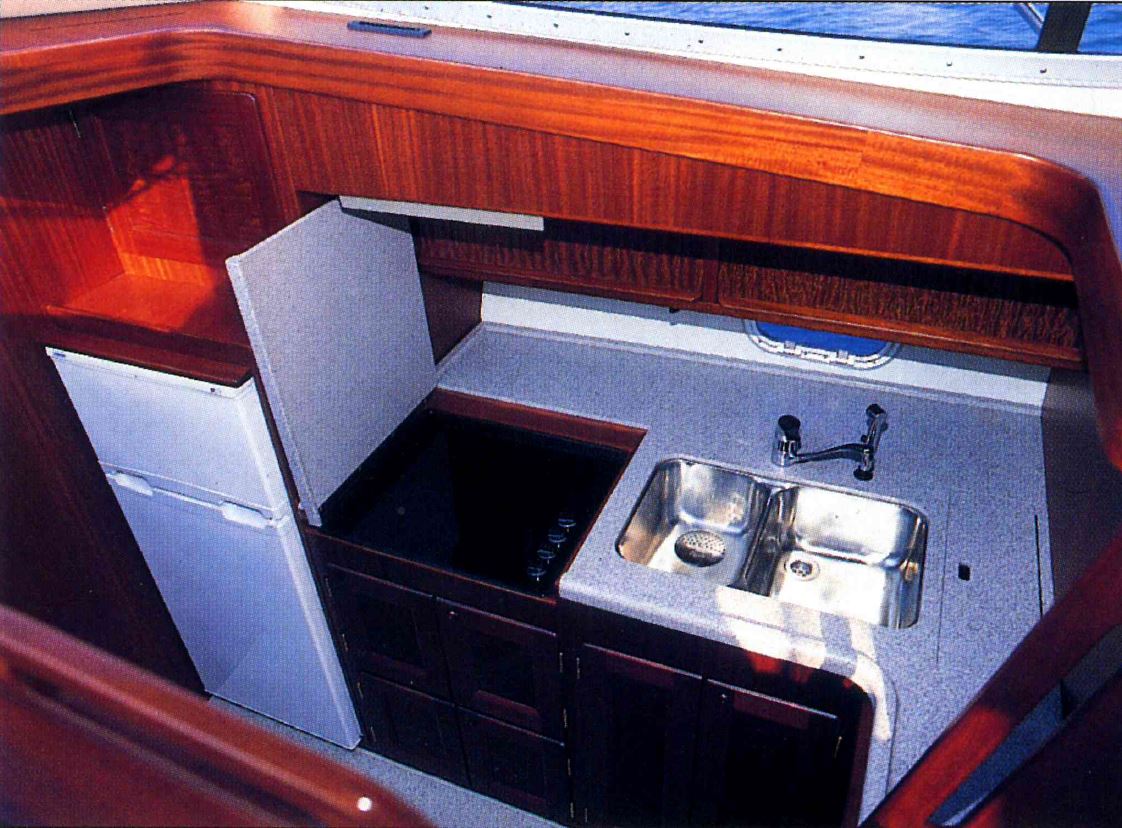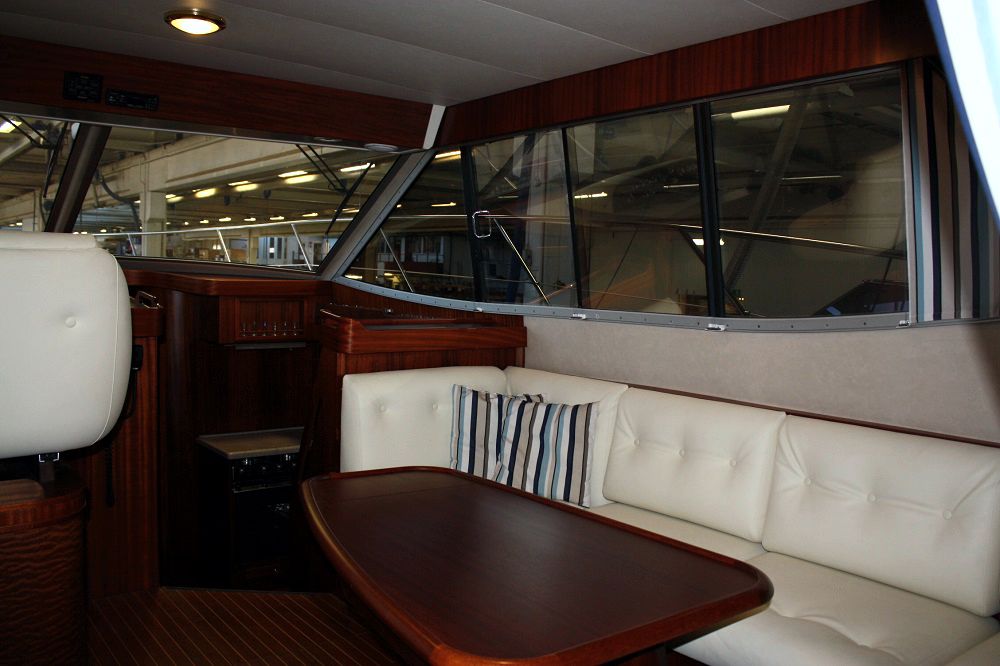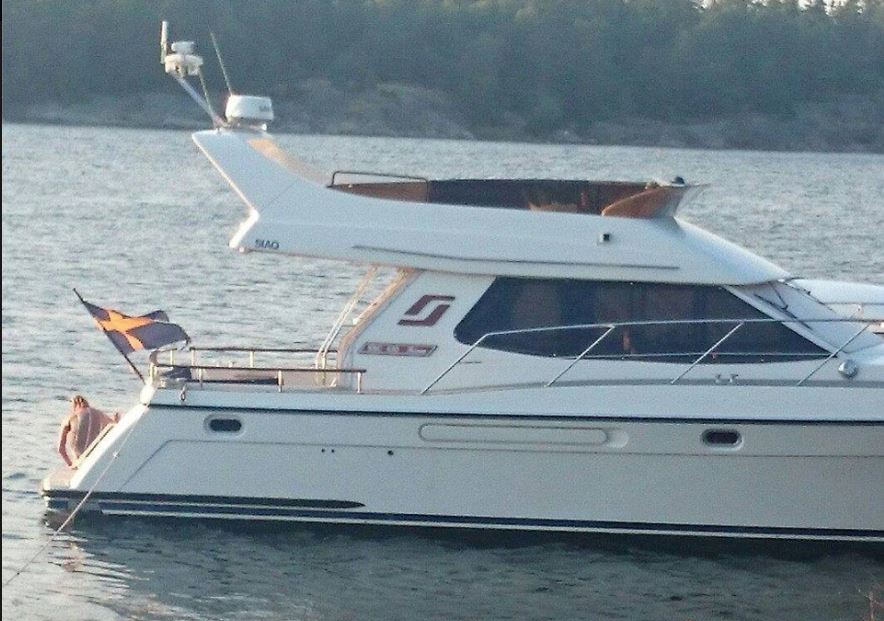Remarks
Concept
The SRC 430 Biscay was the direct successor to the
SRC 420 Biscay and had the same underwater hull, and thus the same handling characteristics. To allow an easier exiting to the side of the swim platform, the swim platform was extended. This previously made the SRC 345 a
SRC 355.
The new layout allowed a guest cabin with private bathroom. The salon has been shortened slightly and got a curved sofa.
The most striking external feature was the new larger flybridge that further spanned the cockpit and gave better weather protection. Also new was a easier to clean smooth gelcoat.
The structure was unchanged - the side window of the salon received the curved line of the SRC 355.
The first ship shown at the fair in Germany caused pure horror to the connoisseur of the 420 Biscay. The advantages of the new layout receded into the background against the everywhere visible austerity measures. Obviously, one had sought to reduce the cost of this ship.
- The cabin Windows above the protecting rib were replaced by port lights in the hull.
- The strong protecting rib was replaced with a slimmer version with rubber insert.
- Many wooden panels in the salon have been omitted (especially around the windows). Some areas were carried out in white and on the instrument panel the wooden parts were simply omitted, although the GRP moldings still had the cut-out for these.
- In the owner's cabin, the lateral cabinets and shelves at the bed were omitted.
-
The galley of the prototype was decorated with a large white refrigerator (the layout of the galley, however, was later changed to the prototype).
- Outside the elegant wooden bar was replaced by a small sign with a minimum term. Later this style was offered as 'Mediterranean style' whereas customers who liked the former style could get their SRC 430 Biscay in 'Nordic style'
- The processing of stainless-steel railing has been simplified. The welding between the foot and rails was not polished as usual.
- Changing the cleats to a standard-model of aluminium die-cast like SRC 380 (Pfeiffer Marine).
A number of these measures was later withdrawn. At least since ship no. 3813 the following feature details have been corrected: skirting board, cleats, wooden parts (instrument panel, curtain boards, wood trim outside ...). So that the ship met again the demands the customer puts at Storebro. The 430 Biscay was then built more often than its direct predecessor, the 420 Biscay.
Engine
With the production launch, the SRC 430 Biscay was offered with three engine variants: Volvo Penta TAMD 63P-A with 355 hp, Volvo Penta TAMD 73P-A EDC with 413 hp and
Caterpillar 3126 diesel with 430 hp. However, the Volvo Penta TAMD 73P-A has recently been ordered. Volvo Penta TAMD 63P-A and Caterpillar 3126 remained the exception. The Volvo Penta TAMD 63P-A was installed three times, the Caterpillar 3126 only twice (S/N 3804, 3806).
With the change to Scania, the SRC 430 Biscay was offered with the Scania DSI9 47M and 450 HP. As a successor model later the
Scania DI9 59M with 483 HP were installed. One ship built for a German customer with epoxy hull, even got Scania DI12 engines.
Miscellaneous
- For a Danish customer, the serial number 3822 was equipped with a remote control in 1998, which was realized by an external developer in cooperation with Volvo Penta. The system integrated into the EDC control of the engines and allowed the control of the engines as well as the bow and stern thrusters. Later, another ship was equipped with it. Unfortunately, the system has not been further developed.
-
Some customers have fitted their SRC 430 Biscay instead of the rounded sofa in the salon with the classic seating corner. This solution also made possible a further folding navigator seat. This equipment is known from serial numbers 3810, 3814 and 3822.
-
Another change to the SRC 420 Biscay was the optional crew cabin, which was accessed by the L-sofa installed in the cockpit. It is known that this option was realized with the serial numbers 3810 and 3829. This ship also has an additional port light on the aft starboard side. Also, the serial number 3828 is equipped with the L-sofa in the cockpit, but probably does not have the crew cabin.
2017-04-13




